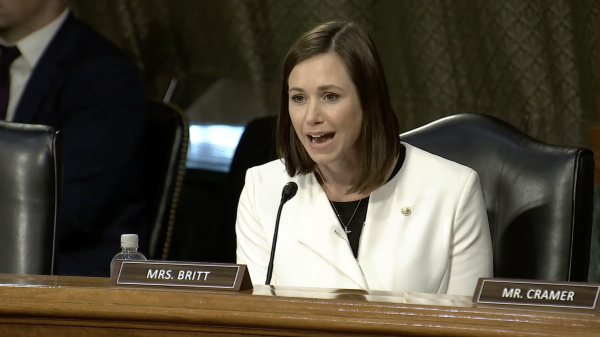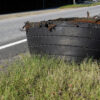By Brandon Moseley
Alabama Political Reporter
On Tuesday, July, 14 NASA’s New Horizons flight controllers received confirmation from the spacecraft that it had successfully completed the flyby of the dwarf planet Pluto. US Representative Mo Brooks (R-Huntsville) released a statement congratulating the team at NASA for the historic accomplishment,
Congressman Mo Brooks said in a statement on Twitter and Facebook, “This morning marks a historic achievement for NASA – National Aeronautics and Space Administration as it successfully completed the #PlutoFlyby after a decade-long journey of billions of miles, in the fastest spacecraft ever launched. I’m proud the United States is the first to reach #Pluto and I applaud those whose hard work led to the success of the New Horizons spacecraft, managed at NASA’s Marshall Space Flight Center. All of the data gleaned from this mission will help scientists better understand the dwarf planet, its surface, its atmosphere, and its moons.”
Pluto is the first Kuiper Belt object visited by a mission from Earth. New Horizons will continue on its adventure mission to explore deeper into the Kuiper Belt, where thousands of objects potentially hold frozen clues as to how the solar system formed.
Principal investigator Alan Stern of the Southwest Research Institute (SwRI) said in a statement, “Following in the footsteps of planetary exploration missions such as Mariner, Pioneer and Voyager, New Horizons has triumphed at Pluto. The New Horizons flyby completes the first era of planetary reconnaissance, a half century long endeavor that will forever be a legacy of our time.”
NASA Administrator Charles Bolden said, “I know today we’ve inspired a whole new generation of explorers with this great success, and we look forward to the discoveries yet to come. This is a historic win for science and for exploration. We’ve truly, once again raised the bar of human potential.”
APL Director Ralph Semmel said, “On behalf of everyone at the Johns Hopkins University Applied Physics Laboratory, I want to congratulate the New Horizons team for the dedication, skill, creativity, and determination they demonstrated to reach this historic milestone. We are proud to be a part of a truly amazing team of scientists, engineers, and mission operations experts from across our nation who worked tirelessly to ensure the success of this mission.”
It will take 16 months for New Horizons to send all of the data back to Earth, but the historic mission has already produced many new discoveries.
Associate administrator for NASA’s Science Mission Directorate in Washington, John Grunsfeld said, “Pluto New Horizons is a true mission of exploration showing us why basic scientific research is so important. The mission has had nine years to build expectations about what we would see during closest approach to Pluto and Charon. Today, we get the first sampling of the scientific treasure collected during those critical moments, and I can tell you it dramatically surpasses those high expectations.”
APL designed, built and operates the New Horizons spacecraft and manages the mission for NASA’s Science Mission Directorate. SwRI in Boulder, Colorado leads the mission, science team, payload operations and encounter science planning.
New Horizons is part of NASA’s New Frontiers Program, managed by the agency’s Marshall Space Flight Center in Huntsville.
New Horizons was instructed to use all of its resources collecting data for 21 hours before it communicated with Earth. The preprogrammed “phone call” (a 15-minute series of status messages beamed back to mission operations at the Johns Hopkins University Applied Physics Laboratory in Maryland through NASA’s Deep Space Network) ended the very suspenseful 21-hour waiting period. New Horizons is now moving past the Pluto system to explore deeper into the Kuiper belt of frozen object outside of the planets.
Astronomers have recently debated what to call Pluto. For decades, school children were taught that Pluto was the ninth planet in the solar system, but as astronomers learned more about Pluto and the Kuiper belt, they discovered that there are many other Kuiper belt objects nearly as big as Pluto and possibly bigger waiting to be discovered. Ganymede, Titan, Callisto, Io, Triton, and even our moon are actually bigger than Pluto; but are not defined as planets because they orbit planets themselves. Rather than using a definition of planet that included objects that are Pluto size, Pluto was re-designated a “dwarf planet” along with Eris, Haumea, Makemake, and the largest asteroid, Ceres. Pluto has only one sixth of the mass of our moon; but has five moons of it’s own with the biggest, Charon, being half the size of Pluto itself.
Stern declared the early results to be a, “Home run! New Horizons is returning amazing results already. The data look absolutely gorgeous, and Pluto and Charon are just mind blowing.”
A new close-up image of an equatorial region near the base of Pluto’s bright heart-shaped feature shows a mountain range with peaks jutting as high as 11,000 feet (3,500 meters) above the surface of the icy body.
Astronomers estimate that the mountains on Pluto likely formed no more than 100 million years ago (the solar system is 4.56-billion-year-old). If true, this suggests that the close-up region, which covers about one percent of Pluto’s surface, might still be geologically active today.
Jeff Moore of the New Horizons Geology, Geophysics and Imaging Team (GGI) at NASA’s Ames Research Center in Moffett Field, California said, “This is one of the youngest surfaces we’ve ever seen in the solar system.”
Since Pluto does not orbit a bigger planet like the icy moons of giant planets, Pluto cannot be heated by gravitational interactions with the much larger planetary body, some other process must be at work generating the mountainous landscape.
GGI deputy team leader at SwRI John Spencer said, “This may cause us to rethink what powers geological activity on many other icy worlds.”
Charon also surprised the team. The moon appears youthful with a varied terrain. Scientists are surprised by the apparent lack of craters. A swath of cliffs and troughs stretching about 600 miles (1,000 kilometers) suggests widespread fracturing of Charon’s crust, likely the result of internal geological processes. The image also shows a canyon estimated to be 4 to 6 miles (7 to 9 kilometers) deep. In Charon’s north polar region, the dark surface markings have a diffuse boundary, suggesting a thin deposit or stain on the surface.
New Horizons also observed the moons: Nix, Hydra, Styx, and Kerberos. The new sneak-peak image of Hydra reveals that it has an apparent irregular shape. Its size is estimated to be about 27 by 20 miles (43 by 33 kilometers).
Hydra’s surface appears to be coated with water ice. Future images will reveal more this and the other moons. Spectroscopic data from New Horizons’ Ralph instruments reveal an abundance of methane ice, but with striking differences among regions across the frozen surface of Pluto.
Grunsfeld said, “With the successful flyby of Pluto we are celebrating the capstone event in a golden age of planetary exploration. While this historic event is still unfolding –with the most exciting Pluto science still ahead of us — a new era of solar system exploration is just beginning. NASA missions will unravel the mysteries of Mars, Jupiter, Europa and worlds around other suns in the coming years.”
Congressman Mo Brooks represents the Fifth Congressional District in Alabama, which includes Huntsville and the Marshall Space Flight Center.
(Original reporting by Space.com contributed to this report. Wikipedia was used to double check previously known facts)





















































